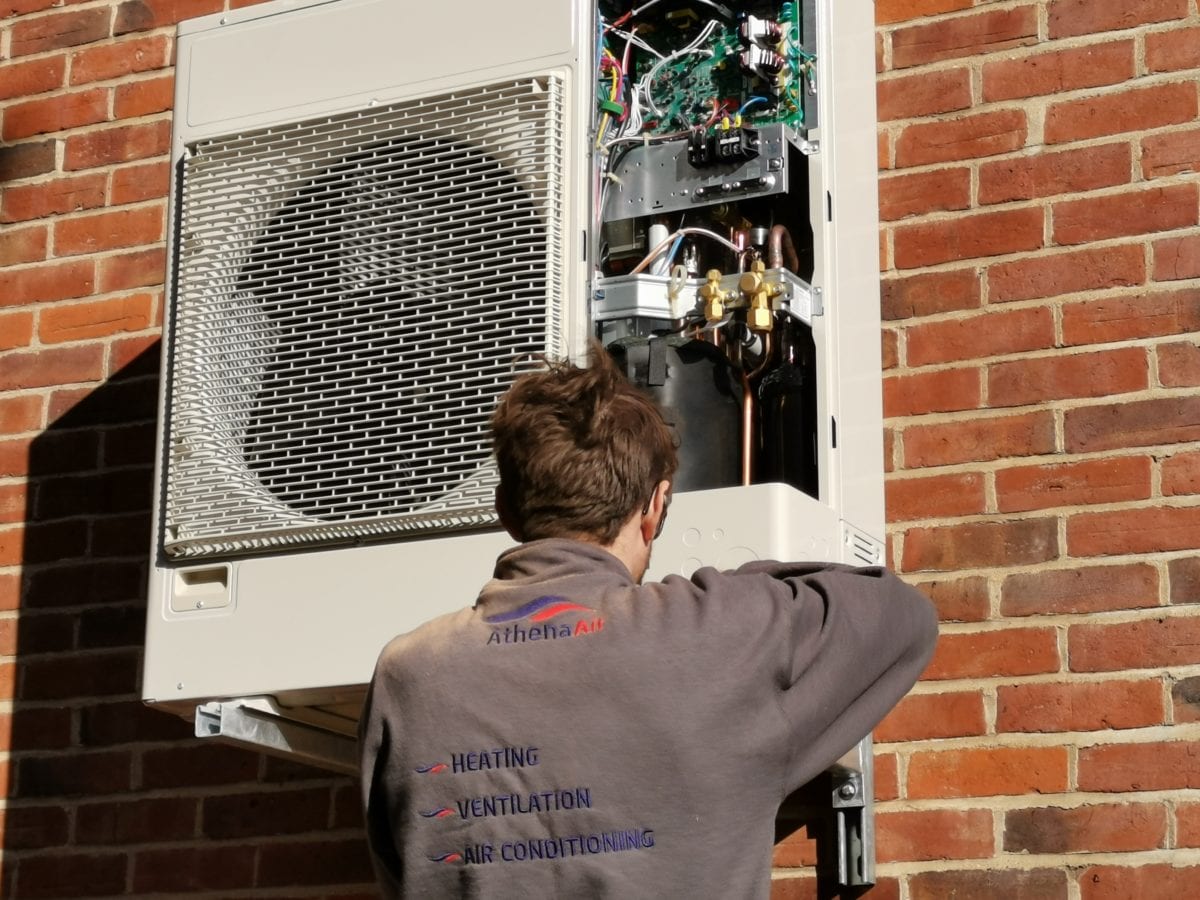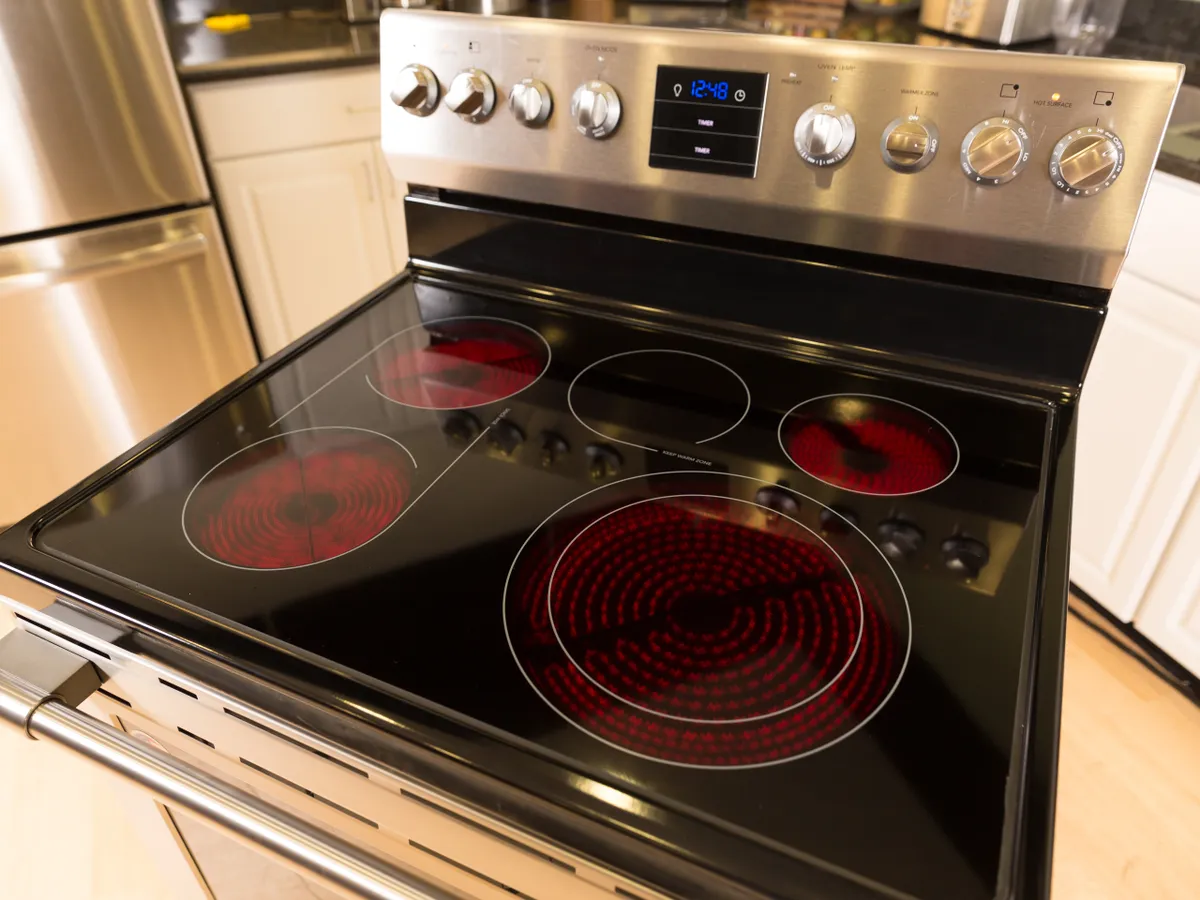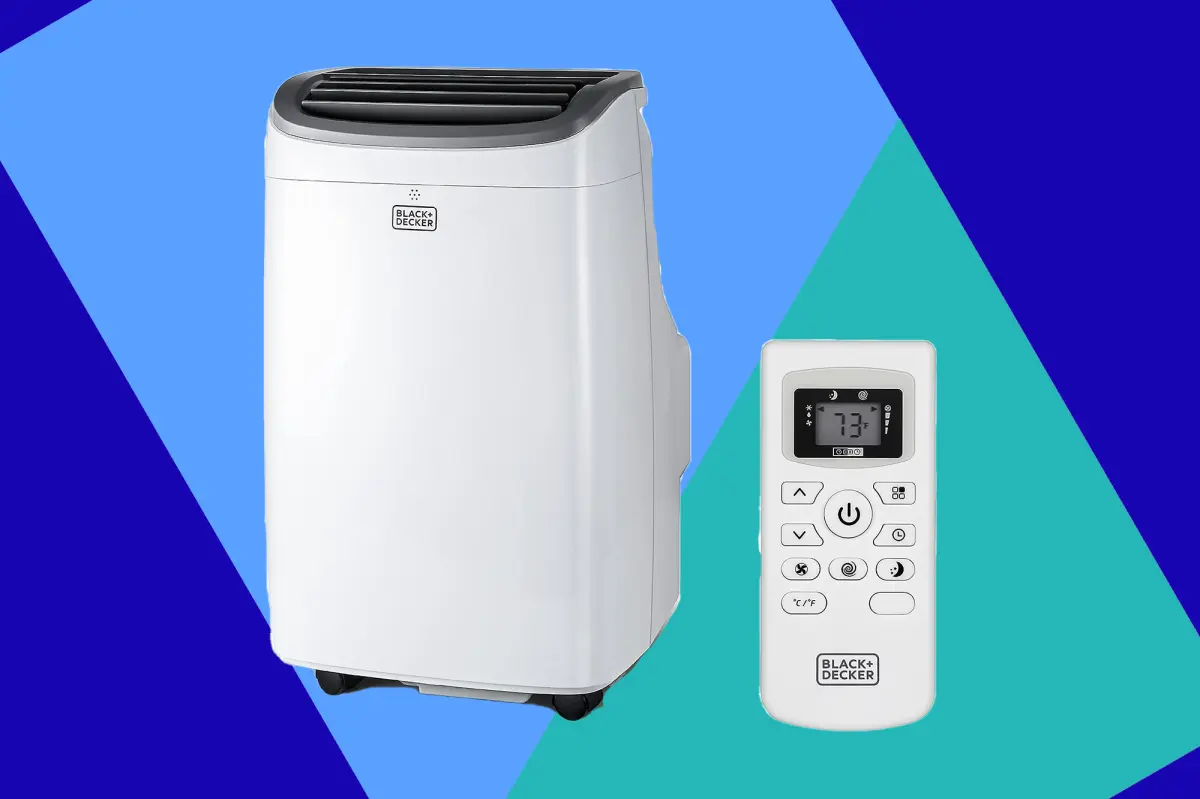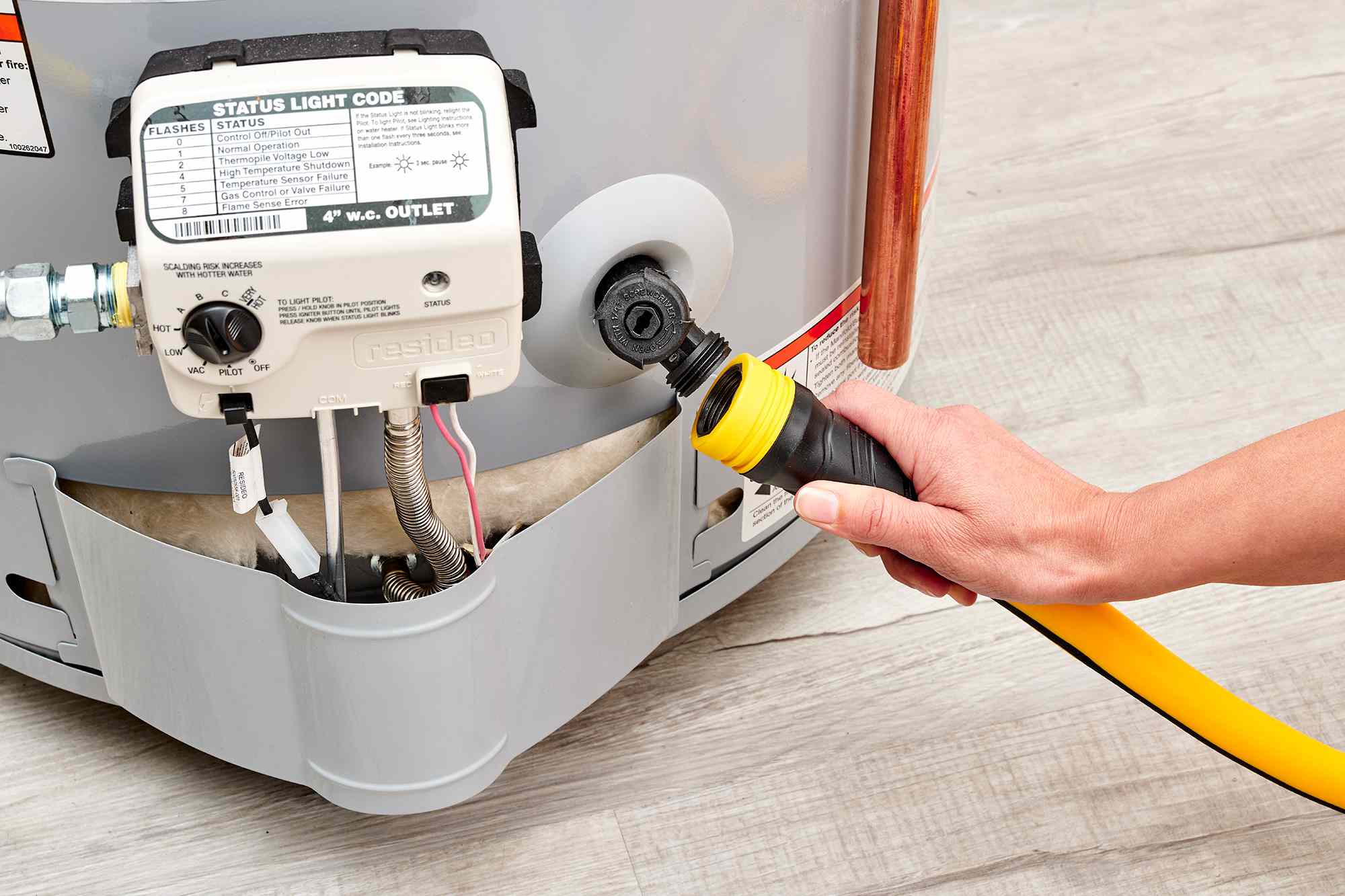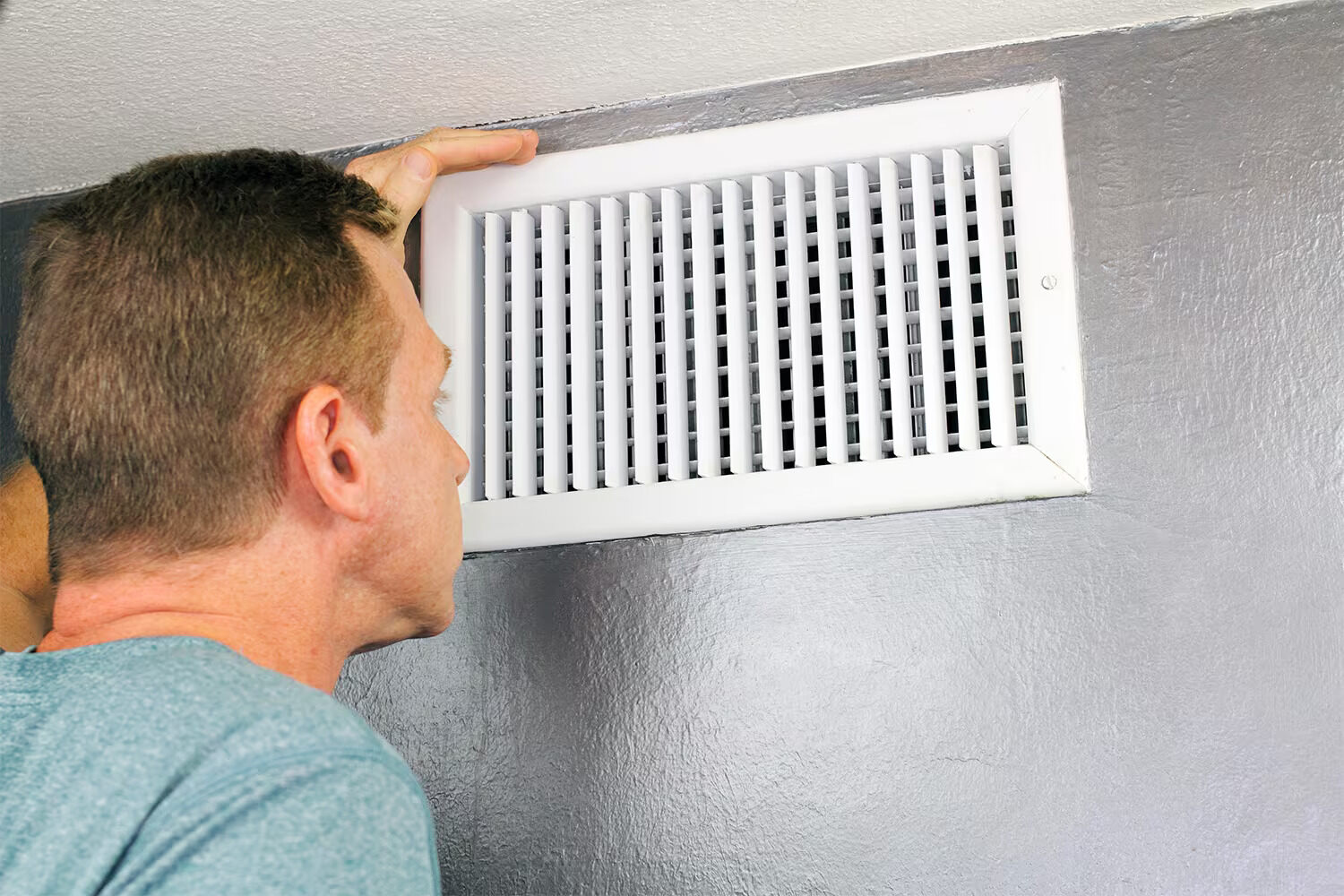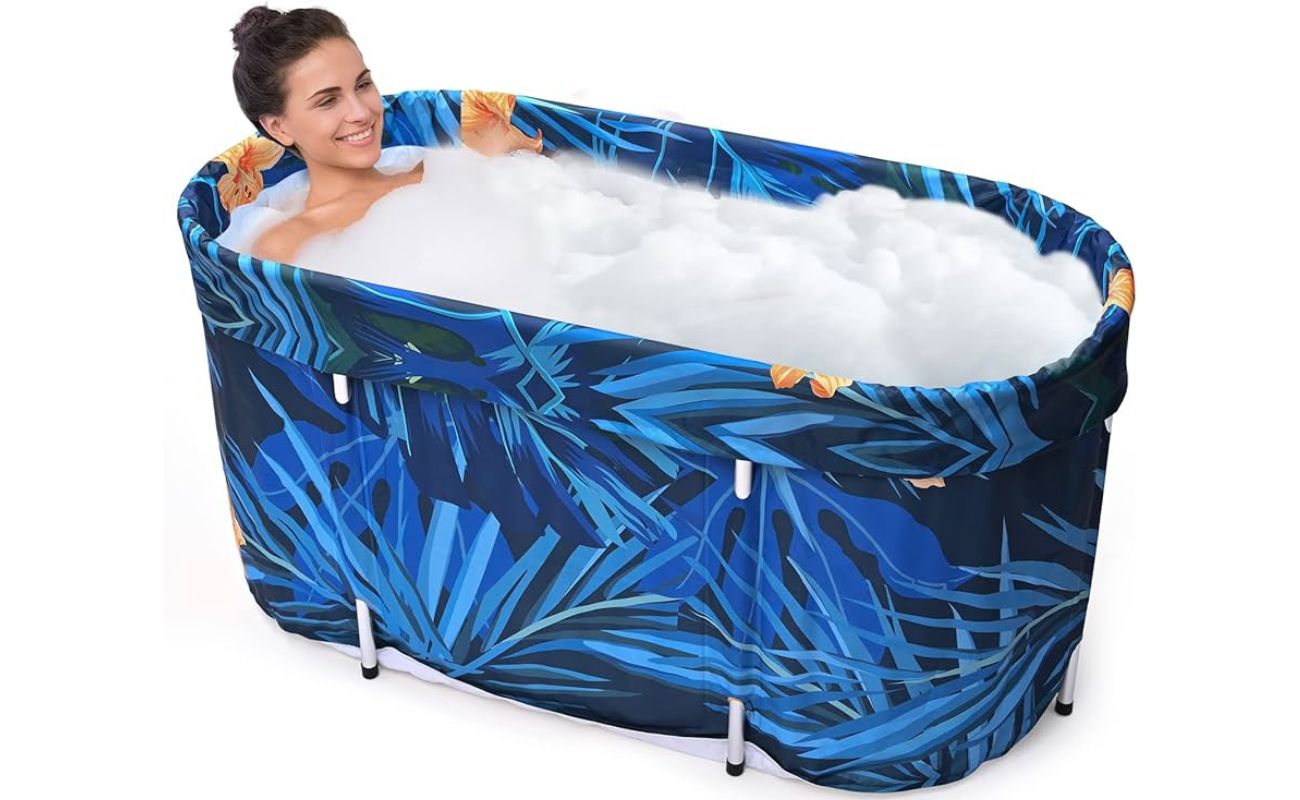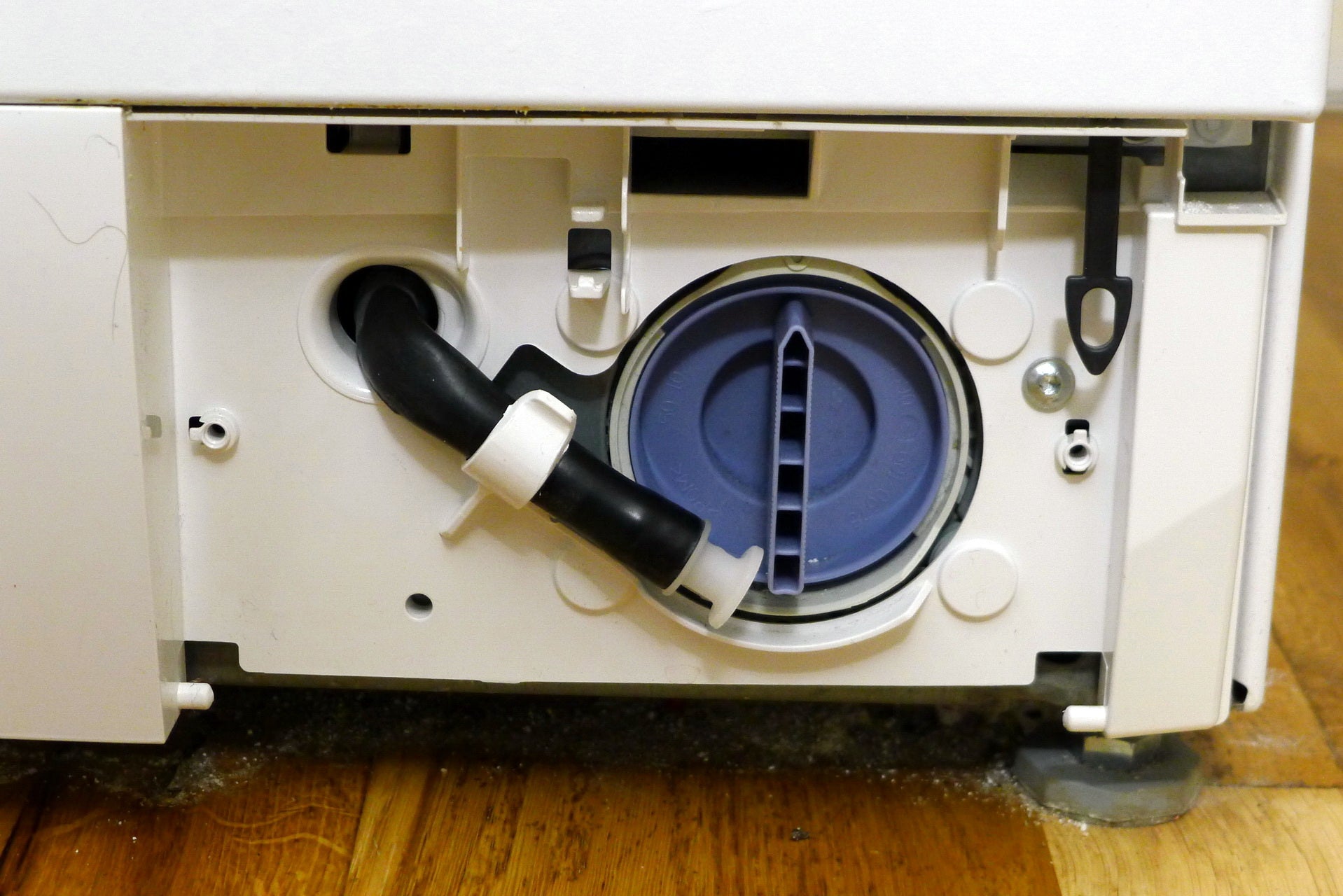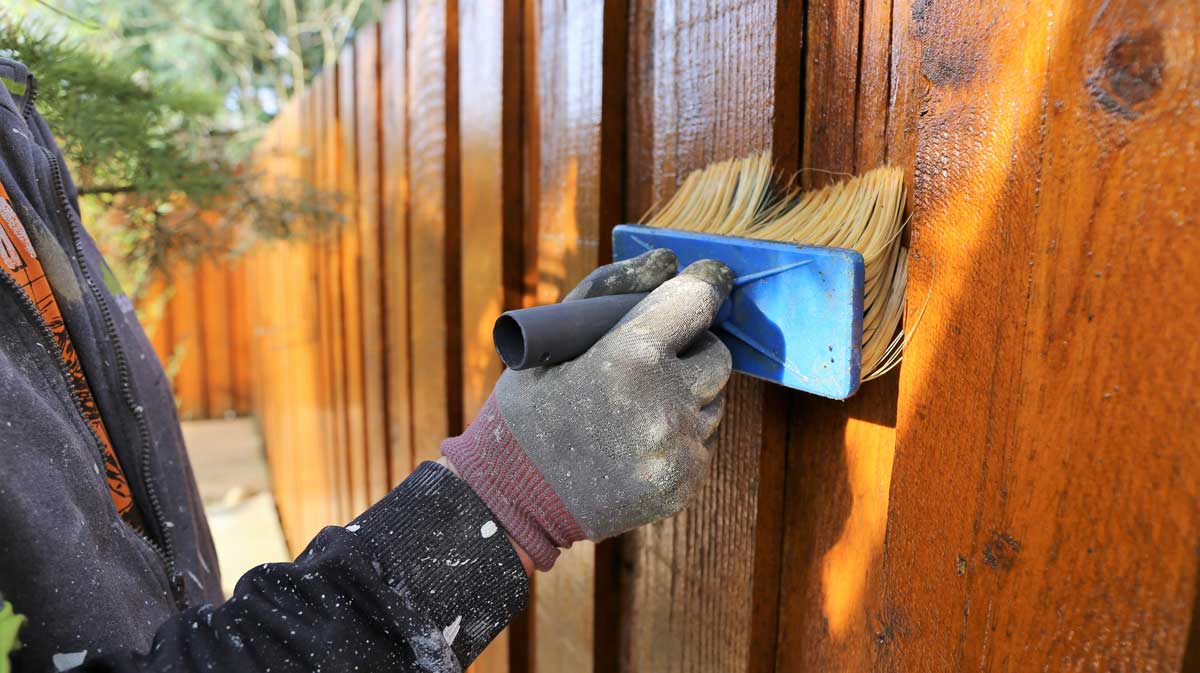Home>Home Maintenance>How Often Do You Have To Drain A Portable Air Conditioner
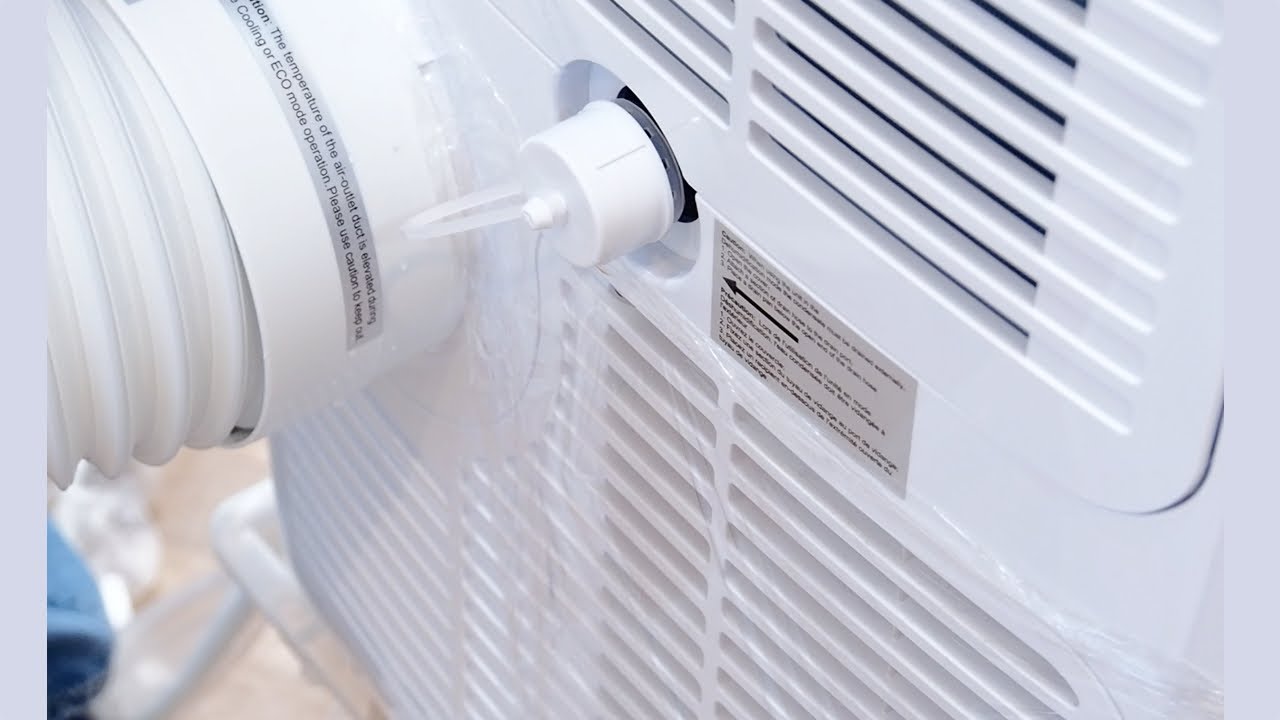

Home Maintenance
How Often Do You Have To Drain A Portable Air Conditioner
Modified: August 23, 2024
Learn the proper home maintenance routine for draining a portable air conditioner and how often you should do it to ensure optimal performance and efficiency.
(Many of the links in this article redirect to a specific reviewed product. Your purchase of these products through affiliate links helps to generate commission for Storables.com, at no extra cost. Learn more)
Introduction
Welcome to the world of home maintenance, where we’ll dive into the realm of portable air conditioners and the important task of draining them. If you’re a proud owner of a portable air conditioner or are contemplating getting one, it’s essential to understand the drainage process and how often it needs to be done.
A portable air conditioner is a versatile and convenient cooling solution that can be easily moved from room to room. It offers relief during hot summer months, providing a comfortable indoor environment without the need for complex installation or extensive ductwork.
However, one aspect of owning a portable air conditioner that often gets overlooked is the regular drainage required to maintain its optimal performance. Proper drainage ensures efficient operation and prevents the accumulation of excess moisture, which can lead to mold and other potential issues.
Let’s explore the different drainage mechanisms in portable air conditioners, the factors that affect drainage frequency, recommended guidelines, and how to properly drain your portable air conditioner. We’ll also cover troubleshooting common drainage issues and when it’s best to seek professional assistance.
So, if you’re ready to keep your portable air conditioner in top shape and ensure a refreshing and comfortable environment in your home, let’s get started!
Key Takeaways:
- Proper drainage is essential for maintaining your portable air conditioner’s performance. Factors like humidity, room size, and usage affect drainage frequency. Regular maintenance and cleaning ensure efficient cooling and prevent issues.
- Understanding drainage mechanisms and following recommended guidelines is crucial. Regularly monitor and adjust drainage frequency based on environmental conditions. Seek professional assistance for persistent drainage issues to ensure optimal performance and longevity.
Read more: How Often Do You Have To Drain A Hot Tub
Understanding Portable Air Conditioners
A portable air conditioner is a cooling system designed to provide relief from hot and humid weather, offering the flexibility to cool specific areas within a home or office. Unlike traditional central air conditioning systems, portable air conditioners do not require permanent installation or extensive ductwork, making them a popular choice for renters or those who prefer a more temporary cooling solution.
Portable air conditioners typically consist of a self-contained unit with a compressor, condenser, evaporator, and a fan. They work by extracting warm air from the room, cooling it through the process of refrigeration, and then expelling the cool air back into the space. This cycle is repeated continuously until the desired temperature is reached.
One of the main benefits of portable air conditioners is their mobility. They come equipped with wheels or casters, allowing users to easily move them from room to room as needed. This versatility means you can keep cool in the living room during the day and move the unit to your bedroom for a comfortable night’s sleep.
Additionally, portable air conditioners are a cost-effective cooling option, especially for smaller spaces. They consume less energy compared to central air conditioning systems, helping to reduce electricity bills. They also provide supplemental cooling in areas where the central air may be inadequate, such as in older homes or newly added rooms.
Despite their numerous benefits, portable air conditioners also have a few drawbacks to consider. Firstly, while they effectively cool small to medium-sized spaces, they may struggle to maintain comfortable temperatures in larger rooms or open floor plans. It’s important to consider the square footage and insulation of the area you intend to cool when choosing a portable air conditioner.
Another factor to keep in mind is noise. Portable air conditioners can generate noise due to the operation of the compressor and fan. While most units are designed to minimize noise levels, it’s important to consider this aspect if you’re particularly sensitive to sound or plan to use the unit in a noise-sensitive environment.
Additionally, portable air conditioners require adequate ventilation for the hot air they exhaust outside. This is typically achieved through a window venting kit or a vent hose that extends outside through an opening. It’s crucial to ensure proper installation and sealing to prevent hot air from leaking back into the room.
Now that we have a better understanding of portable air conditioners and their benefits and drawbacks, it’s time to explore the drainage mechanisms and frequency required to maintain their optimal performance.
Drainage Mechanisms in Portable Air Conditioners
To function efficiently and prevent the build-up of excess moisture, portable air conditioners employ various drainage mechanisms. Understanding these mechanisms is essential for proper maintenance and optimal performance of your unit. Let’s explore the common drainage mechanisms found in portable air conditioners.
1. Self-Evaporative Technology:
Many modern portable air conditioners feature self-evaporative technology. This mechanism utilizes the condensation created during the cooling process to cool down the condenser, improving overall energy efficiency. The majority of the condensation is expelled as water vapor through the exhaust hose, minimizing the need for manual drainage. However, in high humidity conditions or extended periods of use, some residual condensation may still require manual draining.
2. Condensation Collection Tank:
Some portable air conditioners are equipped with a condensation collection tank, also known as a drain pan or reservoir. Any excess condensation that cannot be evaporated or expelled is collected in this tank. When the tank reaches its capacity, it triggers an indicator or a shut-off mechanism to prevent overflow. Manual drainage is necessary by emptying the tank into a drain or sink. Regularly checking and emptying the condensation collection tank helps maintain efficient operation.
3. Gravity Drainage System:
Certain portable air conditioners are designed with a gravity drainage system, which allows for continuous drainage without the hassle of manually emptying a collection tank. This mechanism requires connecting a drain hose to the unit and directing it to a floor drain or suitable outlet. The collected condensation is then automatically drained through the hose, eliminating the need for regular monitoring and manual intervention. However, it’s essential to ensure proper installation and seal to prevent any leakage.
Each drainage mechanism offers its own benefits and considerations, and the type of portable air conditioner you own will determine which mechanism is utilized. Understanding the drainage mechanism in your unit enables you to follow the recommended maintenance guidelines and ensures your portable air conditioner operates smoothly and efficiently.
Factors Affecting Drainage Frequency
The frequency at which you need to drain your portable air conditioner depends on several factors that influence the rate of condensation accumulation. By understanding these factors, you can determine the most suitable drainage frequency for your specific conditions. Let’s explore the key factors that affect drainage frequency.
1. Ambient Humidity Levels:
The level of humidity in the air plays a significant role in the amount of condensation generated by your portable air conditioner. In areas with high humidity, such as coastal regions or during rainy seasons, the rate of condensation can be higher. Portable air conditioners equipped with self-evaporative technology can handle moderate humidity levels more effectively, minimizing the need for frequent manual drainage. However, in extremely humid conditions, additional manual drainage may be required.
2. Room Size and Insulation:
The size of the room and the quality of its insulation also impact drainage frequency. Larger rooms require more cooling capacity, leading to increased condensation. Additionally, poorly insulated spaces can allow warm air to infiltrate, causing excess moisture and higher condensation levels. If you have a larger room or inadequate insulation, you may need to drain your portable air conditioner more frequently to prevent overflow and maintain optimal performance.
Read more: How Do You Clean A Portable Air Conditioner
3. Operating Conditions and Usage Duration:
The specific operating conditions and duration for which you use your portable air conditioner will affect the amount of condensation produced. If you typically use your unit for extended periods, especially in hot and humid environments, the condensation accumulation will be higher. Similarly, if you operate your portable air conditioner in a confined space with limited ventilation, the moisture levels can rise quickly. In such cases, more frequent drainage may be necessary to prevent water build-up and potential damage.
It’s important to monitor these factors regularly and adjust the drainage frequency accordingly. Keeping in mind the ambient humidity levels, room size and insulation quality, as well as the operating conditions and duration, will help you maintain the optimal performance of your portable air conditioner and prevent any issues related to excessive condensation.
Recommended Drainage Frequency
To ensure the efficient operation of your portable air conditioner and prevent any potential issues related to excess condensation, it’s important to follow recommended drainage guidelines. While the specific frequency may vary depending on individual factors, here are some general guidelines to help you determine the ideal drainage frequency for your unit:
1. General Guidelines:
For portable air conditioners equipped with self-evaporative technology and operating in moderate humidity environments, manual drainage may not be required frequently. In such cases, you can typically expect to drain your unit every 2-3 weeks or as needed. Regularly check the condensation collection tank or the drain hose to ensure it is not reaching its capacity. If you notice any signs of overflowing or excessive moisture, it’s best to drain the unit immediately.
2. High Humidity Environments:
In areas with high humidity, particularly during humid seasons or in coastal regions, the rate of condensation accumulation can be higher. In such cases, you may need to drain your portable air conditioner more frequently, even if it is equipped with self-evaporative technology. Monitor the moisture levels and drainage system regularly, and consider draining the unit at least once a week or as soon as the condensation collection tank indicates it is reaching its capacity.
3. Extended Usage Scenarios:
If you use your portable air conditioner for extended periods or operate it in confined spaces with limited ventilation, the condensation accumulation will be greater. To avoid any potential overflow or damage, it’s important to drain the unit more frequently in such scenarios. Consider checking the drainage system and emptying the condensation collection tank every few days or as needed, ensuring it does not exceed its capacity.
Remember, these are general guidelines, and it is crucial to assess the specific conditions and factors affecting your portable air conditioner’s performance. Regularly monitoring the humidity levels, room size and insulation, as well as considering the duration and usage conditions, will help you determine the most appropriate drainage frequency to maintain optimal functionality and prevent any potential drainage-related issues.
Steps to Properly Drain a Portable Air Conditioner
Knowing how to properly drain your portable air conditioner is crucial for maintaining its optimal performance and preventing any issues related to excess condensation. Here are the steps you can follow to ensure a smooth and effective drainage process:
1. Precautions and Safety Measures:
Before starting the drainage process, ensure you take the necessary precautions to protect yourself and your surroundings. Turn off and unplug your portable air conditioner from the power source to avoid any electrical hazards. Have a towel or absorbent material ready to catch any water that may drip during the drainage procedure.
2. Manual Drainage Procedure:
If your portable air conditioner utilizes a condensation collection tank rather than a gravity drainage system, you will need to manually drain the tank. Locate the condensation collection tank, which is usually located at the bottom of the unit. Depending on the design, it may be a removable tray or a valve that can be opened for draining.
Place a towel underneath the tank to catch any water that may spill. Carefully remove the tank and empty its contents into a drain or sink. If there is a valve, open it to allow the water to flow. Once drained, thoroughly clean and dry the tank before reattaching it to the portable air conditioner.
Read more: How Do You Say Air Conditioner In Spanish
3. Cleaning and Maintenance Tips:
Regular cleaning and maintenance of your portable air conditioner will ensure its longevity and optimal performance. In addition to proper drainage, consider the following cleaning and maintenance tips:
- Clean or replace the air filter regularly to maintain proper airflow and prevent dust and debris accumulation.
- Inspect the exhaust hose and window venting kit for any blockages or leaks. Clear any obstructions and ensure a tight seal.
- Wipe down the exterior of the unit with a damp cloth to remove any dust or debris.
- Check the condenser and evaporator coils for dirt or residue buildup. Use a soft brush or vacuum to gently clean them.
- Refer to the manufacturer’s instructions for any specific cleaning or maintenance requirements.
By following these steps and incorporating regular cleaning and maintenance practices, you can ensure the efficient operation and longevity of your portable air conditioner.
Troubleshooting Drainage Issues
While proper maintenance and regular drainage can prevent most drainage issues with your portable air conditioner, occasionally you may encounter some common problems. Here are a few common drainage issues and their potential solutions:
1. Excessive Condensation:
If you notice an excessive amount of condensation or water pooling around your portable air conditioner, it could indicate a problem. Check the drainage system for any blockages or leaks. Ensure that the condensation collection tank is properly seated and that the drain hose is securely connected. Clear any obstructions and ensure adequate ventilation to promote proper evaporation and drainage.
2. Overflowing Condensation Collection Tank:
If the condensation collection tank is overflowing, it may indicate that it is not draining properly. Check the drain hose for any kinks or blockages that may be preventing the water from flowing freely. Ensure that the drain hose is properly positioned and not positioned at a height higher than the unit, as this can impede drainage. If the problem persists, consider contacting a professional for further inspection and assistance.
Read more: How Often Do You Change Air Purifier Filters
3. Leaking Drainage System:
If your portable air conditioner is leaking water from the drainage system, it may be due to a loose or damaged connection. Ensure that all connections, including the drain hose and condensation collection tank, are tightly secured. Check for any cracks or damage in the hose or tank and replace them if necessary. If the leakage continues, it may be best to seek professional assistance to identify and resolve the issue.
Seeking Professional Assistance:
If you encounter persistent drainage issues or are unsure how to resolve them, it is advisable to seek professional assistance. Certified technicians with expertise in portable air conditioner maintenance can diagnose and address any underlying problems with your unit’s drainage system. They can also provide recommendations on improving performance and efficiency.
Remember, proper and regular maintenance, including drainage, is key to ensuring the optimal functionality and longevity of your portable air conditioner. By addressing drainage issues promptly and seeking professional assistance when needed, you can rely on your portable air conditioner to provide efficient and reliable cooling whenever you need it.
Conclusion
Proper drainage is a crucial aspect of maintaining the optimal performance and longevity of your portable air conditioner. By understanding the various drainage mechanisms, factors influencing drainage frequency, and following recommended guidelines, you can ensure a smooth and efficient cooling experience in your home or office.
Portable air conditioners offer flexibility and convenience, allowing you to enjoy cool and comfortable spaces without the need for extensive installation or ductwork. However, it’s important to be aware of their drainage requirements to prevent issues related to excess condensation and moisture accumulation.
Self-evaporative technology, condensation collection tanks, and gravity drainage systems are among the common mechanisms employed by portable air conditioners. Each requires specific maintenance and attention to ensure effective drainage. Monitoring ambient humidity levels, considering room size and insulation, and evaluating operating conditions and usage duration play a role in determining the appropriate drainage frequency for your unit.
Following general drainage guidelines, adjusting frequency based on high humidity environments and extended usage scenarios, and taking necessary precautions and safety measures are key to proper drainage. Regular cleaning and maintenance, including manual drainage of the condensation collection tank and addressing any drainage issues promptly, will help keep your portable air conditioner in top shape.
In the event of persistent drainage issues or if you’re unsure how to address them, don’t hesitate to seek professional assistance. Certified technicians can diagnose and resolve any underlying problems, ensuring optimal performance and efficiency of your portable air conditioner.
By taking the time to understand and implement proper drainage practices, you can enjoy a refreshing and comfortable indoor environment all year round, while also prolonging the lifespan of your portable air conditioner.
So, keep your portable air conditioner in good condition, stay cool, and enjoy the benefits of efficient and effective cooling whenever and wherever you need it!
Frequently Asked Questions about How Often Do You Have To Drain A Portable Air Conditioner
Was this page helpful?
At Storables.com, we guarantee accurate and reliable information. Our content, validated by Expert Board Contributors, is crafted following stringent Editorial Policies. We're committed to providing you with well-researched, expert-backed insights for all your informational needs.

